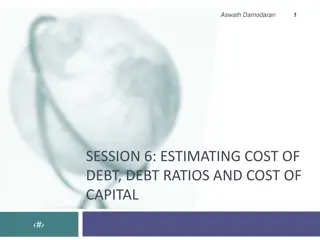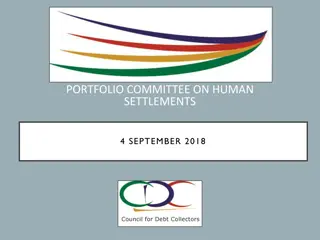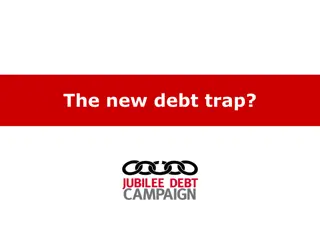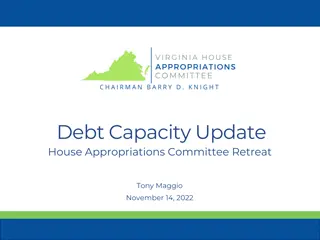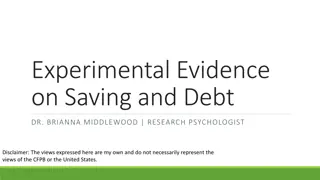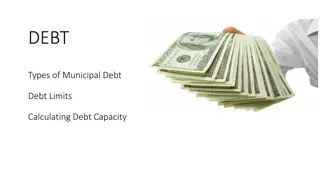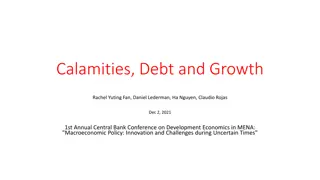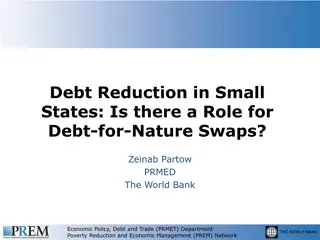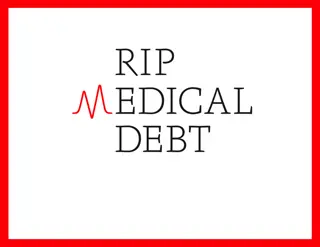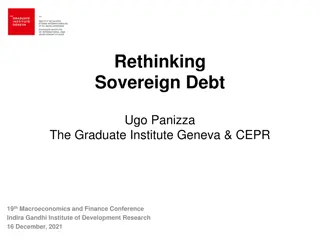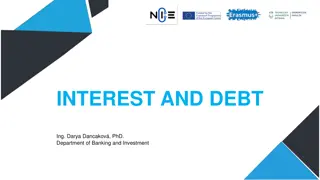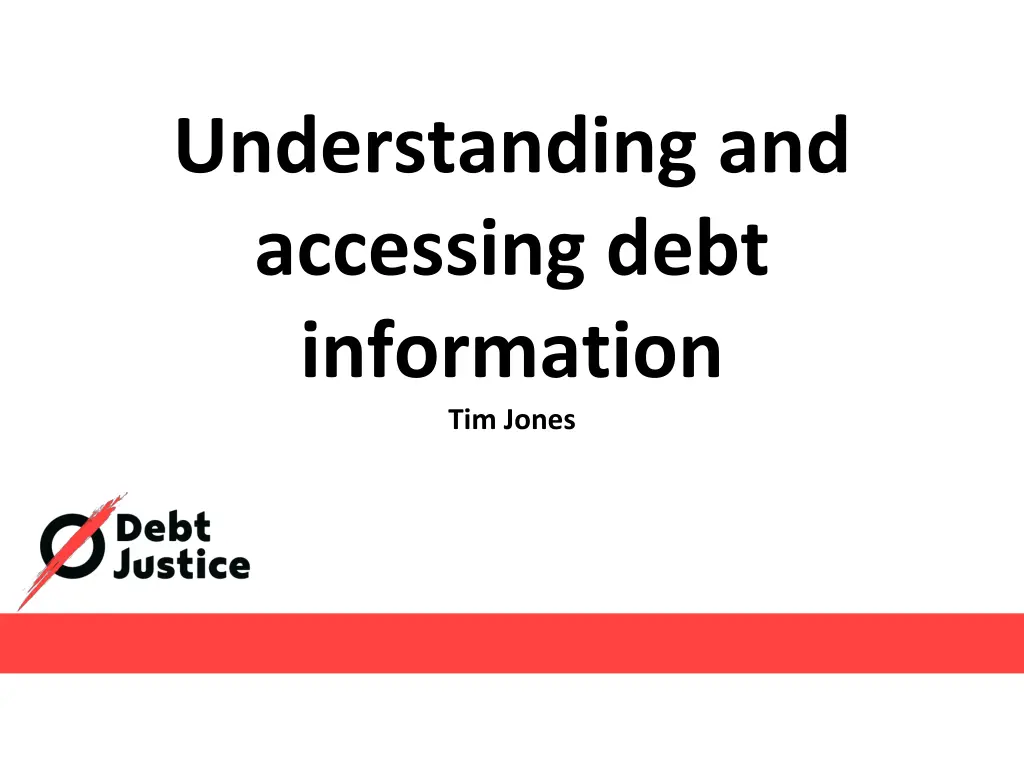
Accessing Debt Information: Understanding Debt Concepts and Types
Explore the key concepts of debt information, including external and domestic debt, debt indicators, types of creditors, and debt as a percentage of GDP. Gain insights into debt payments, creditor locations, and currency considerations for a comprehensive understanding of debt management.
Download Presentation

Please find below an Image/Link to download the presentation.
The content on the website is provided AS IS for your information and personal use only. It may not be sold, licensed, or shared on other websites without obtaining consent from the author. If you encounter any issues during the download, it is possible that the publisher has removed the file from their server.
You are allowed to download the files provided on this website for personal or commercial use, subject to the condition that they are used lawfully. All files are the property of their respective owners.
The content on the website is provided AS IS for your information and personal use only. It may not be sold, licensed, or shared on other websites without obtaining consent from the author.
E N D
Presentation Transcript
Understanding and accessing debt information Tim Jones
Three sessions 1. 2. 3. TODAY Debt concepts World Bank and IMF data (30 November) Other data sources (7 December)
Session 1: Understanding debt information 1. 2. External and domestic debt Debt indicators: Debt to GDP v debt payments to revenue Types of creditors Concessional and non-concessional loans 3. 4.
External, domestic and currency External or domestic = where the creditor is based Foreign currency or local = what currency the debt is owed in External has balance of payments risk whatever currency it is owed in Foreign has currency risk whoever the debt is owed to
Debt as a percentage of GDP Debt as a percentage of GDP is a poor guide to government debt levels as takes no account of: The interest rate on the debt When the debt is due to be paid How much GDP government is collecting in tax revenue The currency the debt is owed in Who the debt is owed to (external or domestic)
Debt as a percentage of GDP Government debt as a percentage of GDP 250 200 % of GDP 150 100 50 0 Pakistan Japan
Debt as a percentage of GDP Government debt as a percentage of GDP Government interest payments as a percentage of revenue 250 60 % of government revenue 50 200 40 % of GDP 150 30 100 20 50 10 0 0 Pakistan Japan Pakistan Japan
Debt payments Debt service = principal + interest + charges Principal = Amortization Interest + charges
Debt payment figures Interest as a percentage of revenue Debt service as a percentage of revenue External debt service as a percentage of revenue Problems: Debt principal payments can (sometimes) be refinanced (domestic easier than external) Need to project into the future, but projections can always be falable
Categories of creditors Multilateral (IMF and World Bank but also various other less well known) Bilateral other governments (Paris Club, non-Paris Club) Private bonds, commercial bank loans, syndicated loans,oil- backed loans, export credits (grey area) [External and domestic]
Bonds and yields Bond = an easily tradeable debt contract Because bought and sold on financial markets every day, can see what private lenders think about a particular country https://markets.businessinsider.com/bonds/ghana- _republic_of-bond-2029-xs1821416234 Yield
Concessional and non-concessional Concessional = no clear definition. Lower interest rate than can borrow from private markets. Non-concessional = what private sector will charge, but this unique to time and place Grant element = Does not mean there is any grant. Should be a measure of the cost to the lender, but high discount rates used in calculations mean lenders can make profit from concessional loans
Next session: Wednesday 30 November World Bank International Debt Statistics database IMF Debt Sustainability Analysis
Questions? Tim Jones, Head of Policy, Debt Justice UK tim@debtjustice.org.uk https://debtjustice.org.uk/report/guide-to-understanding-and- accessing-debt-information https://data.debtjustice.org.uk/







